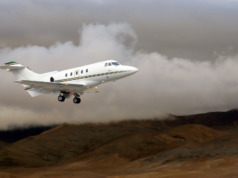
As a business aviation user, you already know its value: the highest levels of safety, security, and discretion. How can a professionally led flight department add value to your company?
Aviation consultant Pete Agur says, “Good leadership means respecting the professionals you hired.” (see “Who’s the Boss?” BAA Sept/Oct 2017). “Professional” is the watchword here. You employ professionals to manage your accounting, legal, and sales departments. You use professional practitioners for financial and medical services in your personal life. But have you considered the professional status of your business aviation team?
Recognizing the need for professional certification in business aviation, the National Business Aviation Association (NBAA) developed the Certified Aviation Manager (CAM) program to identify qualified professionals to lead departments and organizations that use business aircraft. Itself accredited by the National Commission for Certifying Agencies, the CAM program provides an objective, third-party review of its certificants, and is designed to protect the interests of all stakeholders in business aviation. Since 2003, more than 400 aviation professionals have earned their CAM certification.
Job Analysis
What knowledge, skills, and abilities must a person demonstrate to become a CAM? Through its CAM Governing Board, the NBAA sponsors a periodic job analysis study, obtaining input from business aviation subject matter experts, practitioners, and educators to specify the CAM knowledge domains:
- Business Management: aviation department structure, financial processes, information safeguards, and social responsibility.
- Human Resources: staffing, compensation, training, and human factors.
- Leadership: vision, ethics, mentoring, self-development, and innovation.
- Aircraft Maintenance and Facilities Operations: aircraft and hangar maintenance, emergency preparedness, and facility security.
- Operations: planning and conducting flights, regulatory compliance, international standards, safety management, and aviation operational security.
Exam, Education, and Experience
The competency-based, criterion-referenced CAM exam’s content is aligned with the job analysis study. Exam performance is evaluated using a statistically determined standard – based on measurements of knowledge, attitudes, and behavior – to determine the applicant’s suitability as a professional aviation manager. Certification is dependent both on exam results and on experience, training, and the specific aviation licenses and certificates held.
Professional Principles and Values
CAM certificants commit to observe professional principles and values, with personal integrity at the core. Together, the first letter of each CAM value spell “SERVICES”:
- Safety: I will maintain the highest standards for safety of personnel and equipment at all times.
- Efficiency: I will strive to achieve the most efficient and cost-effective means of accomplishing my employer’s mission.
- Relevance: I will seek to maintain the most relevant expertise needed by my employer and reach the highest standards possible.
- Vision: I will maintain a vision that supports the highest standards of accomplishment for my company and industry.
- Integrity: I will strive for the highest level of integrity without compromise while accomplishing my duties.
- Commitment: I will demonstrate the highest level of commitment to fulfilling my job duties with distinction.
- Excellence: I will seek excellence in all aspects of mission accomplishment within my realm of responsibility.
- Security: I will maintain the highest levels of security and comfort for all involved in my sphere of influence.
For Business Aviation Users
Professional growth does not stop with attainment of the CAM credential. Certificants must complete continuing education to be recertified every three years. In conjunction with the recurring job analysis survey, both certificants and the CAM program itself grow with the evolving business aviation industry.
For business aviation users like you, CAM is a tool to conduct succession planning for future leaders. For certificants, it is added motivation to continue professional development and stay at the top of their field.
Wise business aviation users encourage professionalism in all their spheres of influence, and there is no better way to do so in business aviation than with CAM. BAA
T. James Buchanan, CAM, C.P.M., is responsible for aviation support services as Director-Flight Operations Administration for a Fortune 500 business aviation department. An experienced business manager, Jim serves as chair of the CAM Governing Board.




